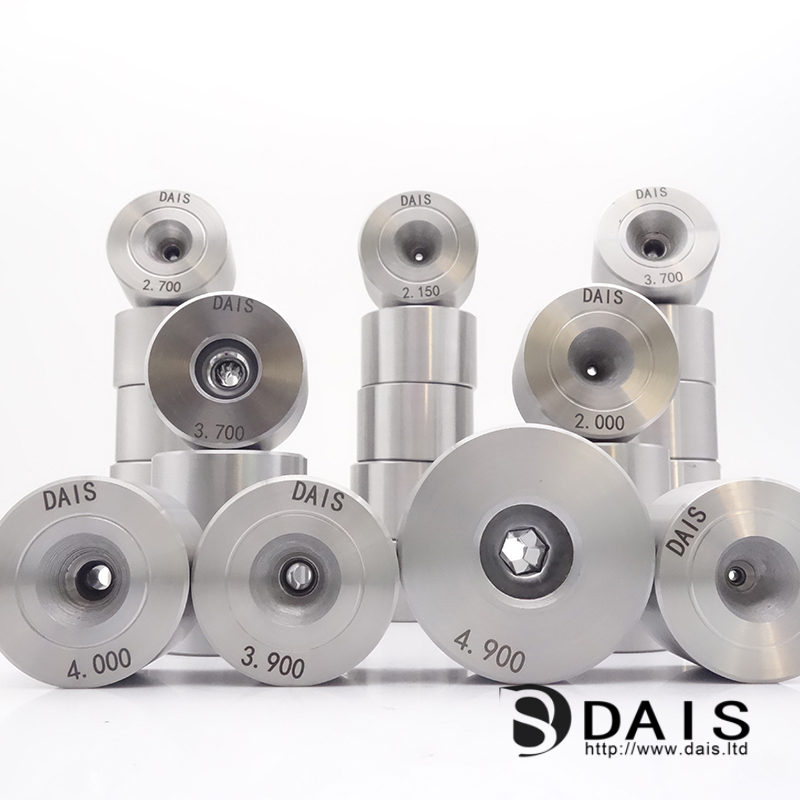Search

ADD:Building 123, Phase 3, Enterprise Base, No. 1 Lianhua Street, High-tech Industrial Development Zone, Zhengzhou, Henan, China
MOB.: +86-15517518512
MOB.: +86-15515520695
E-MAIL: admin@dais.ltd

Key points for the use and maintenance of wire drawing dies!
1. To ensure the smooth running of the wire drawing equipment: the wire drawing drums and wire guide wheels should be smooth and flexible, and their runout tolerances should be strictly controlled.
If the drum wheel or the guide wheel has worn grooves, it should be repaired in time.
2. A good lubrication condition is an important condition to ensure the surface quality of the wire and extend the life of the mold. It is necessary to check the lubrication index frequently and remove the copper powder and impurities in the lubricating oil to prevent it from polluting the equipment and die holes. If the lubrication fails, it must be timely Replace and clean the lubrication system.
3. Reasonable matching of molds ensures the surface quality of wire rods, and controls the accurate and consistent dimensions, reduces the wear of the drawing drum, and reduces the key factors of equipment operation load. For the sliding wire drawing machine, it is the first step of mold matching to be familiar with the mechanical elongation of the equipment and choose the sliding coefficient reasonably.
4. According to the material of the wire to be drawn and the reduction rate of each drawing, select the die pass. Generally speaking, the harder the drawn wire, the smaller the compression angle of the mold and the longer the sizing area; and vice versa. The reduction rate of each drawing is also closely related to the compression angle of the corresponding die. The compression angle should be adjusted appropriately according to the reduction rate.
Maintenance of wire drawing dies:
The effective maintenance and repair of wire drawing dies are crucial to reducing costs.
Due to the vibration of the wire, the area that first contacts the wire in the compression zone of the drawing die first produces some slight annular wear, and then continues to expand to the sizing area, resulting in a serious decline in the surface quality of the wire and an increase in the size of the wire. Not only that, severe wear will cause horizontal cracks (mainly in the drawing process of soft wires) or longitudinal cracks (mainly in the drawing of hard wires) in the mold, causing the mold to be scrapped prematurely.
Therefore, it is necessary to scientifically formulate maintenance specifications for the wire drawing die according to the type of wire to be drawn and the characteristics of the wire drawing. Under normal circumstances, slight ring wear only needs to be polished to resume use, or a slight increase in diameter can meet the wire drawing requirements. Excessive wear will greatly reduce the number of mold repairs, or even scrap, which will increase the cost of wire drawing.